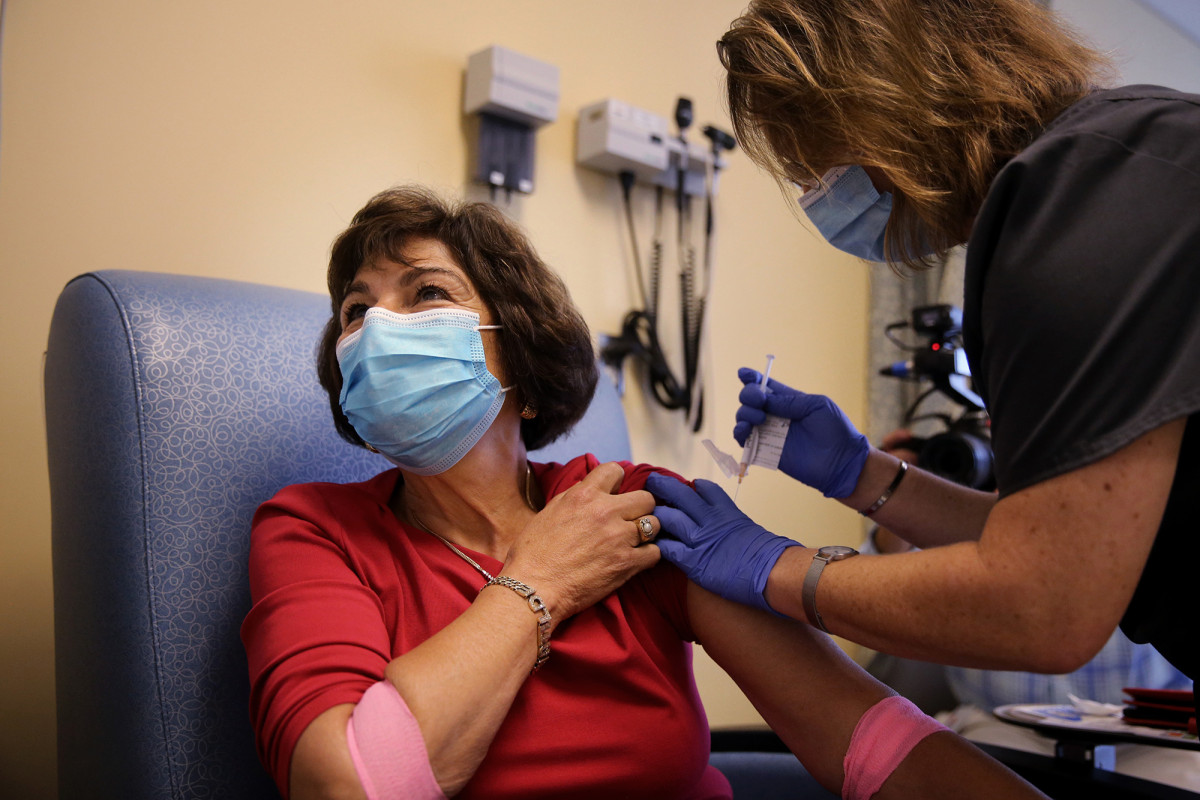The world finally received uplifting COVID-19 news this week when Pfizer announced its vaccine appears to be more than 90 percent effective — but there are plenty of other potential immunizations in the works, too.
In fact, the US and other countries are hoping to have a variety to choose from once the vaccines win their race toward government approval.
Here is how some of the leading vaccines work and how they differ:
Pfizer/BioNTech
How it works: Specially manufactured mRNA, or genetic material, is injected into cells, directing the body to create a tiny amount of coronavirus spike proteins. The body’s immune system responds by making antibodies to the proteins, which protect the person if they’re exposed to COVID-19 down the road. This type of messenger RNA vaccine has never been approved for humans.
How close to market: US health officials have predicted the vaccine will soon get the necessary government approvals courtesy of the FDA’s emergency fast-track effort and begin limited distribution within weeks. The companies say they will have tens of millions of doses ready to go by the end of December, although widespread use isn’t expected until next year.
Moderna
How it works: This vaccine relies on the same mRNA approach as Pfizer’s.
How close to market: As with Pfizer’s vaccine, this immunization also is in its stage-three trial, and its study results are expected later this month, paving the way for an application for emergency government approval in December.
Johnson & Johnson
How it works: A gene for the coronavirus’ spike proteins is attached to a virus for the common cold that has already been “disabled,” so it can’t infect the person. The harmless cold virus acts like a delivery service, dropping the spike-protein gene into the body and prompting the development of a tiny amount of COVID-19 spike proteins, which trigger antibodies. This is what’s known as a viral vector vaccine.
How close to market: The company had to temporarily halt its stage-three trial this fall because of illness in a participant, but got the go-ahead to resume in October. An application for emergency government approval of the vaccine is expected to be made early next year.
AstraZeneca/University of Oxford
How it works: This vaccine also is a viral vector immunization, although it uses a deactivated cold virus from a chimpanzee.
How close to market: Stage-three tests on the vaccine resulted in someone becoming ill, stopping the study for a bit, but trials have since resumed, and an application for FDA approval could by made by late December.
Novavax
How it works: A manufactured version of the virus’s spike proteins is reproduced in insect cells, then purified and injected into the human body, prompting antibody production.
How close to market: Novavax has yet to start its stage-three trial, although it has said it plans to this month.
Sanofi/GlaxoSmithKline
How it works: It uses the same method as Novavax’s.
How close to market: The drugmakers have said they plan to start a stage-three trial in December.
Merck
How it works: The company has several vaccines in development, including an oral one and another that uses a modified measles virus as a Trojan horse to smuggle a tiny bit of the coronavirus into the body so that antibodies can be developed against it.
How close to market: It is not clear when Merck may apply for FDA approval on either vaccine, as the immunizations were still in early-stage trials two weeks ago.


















